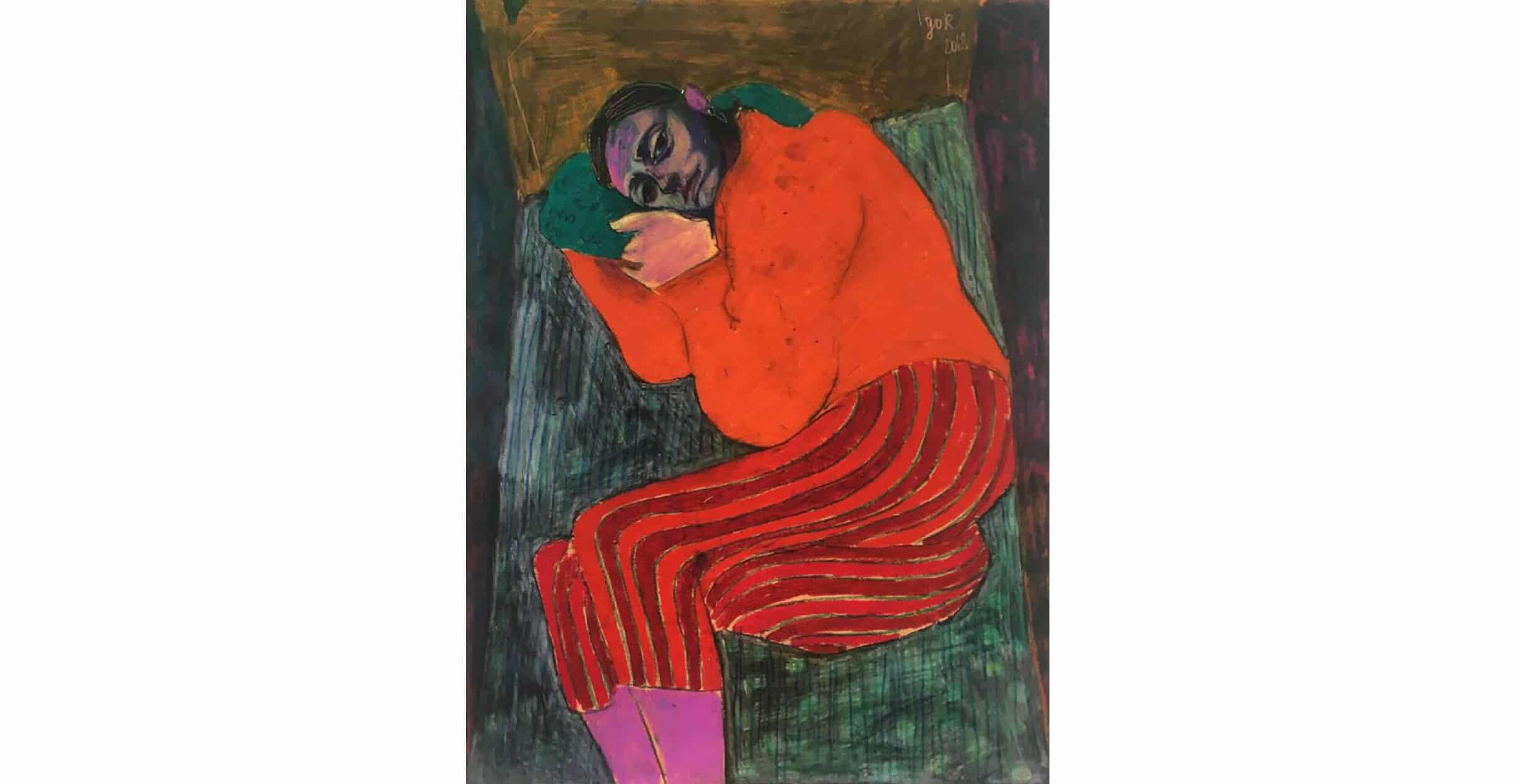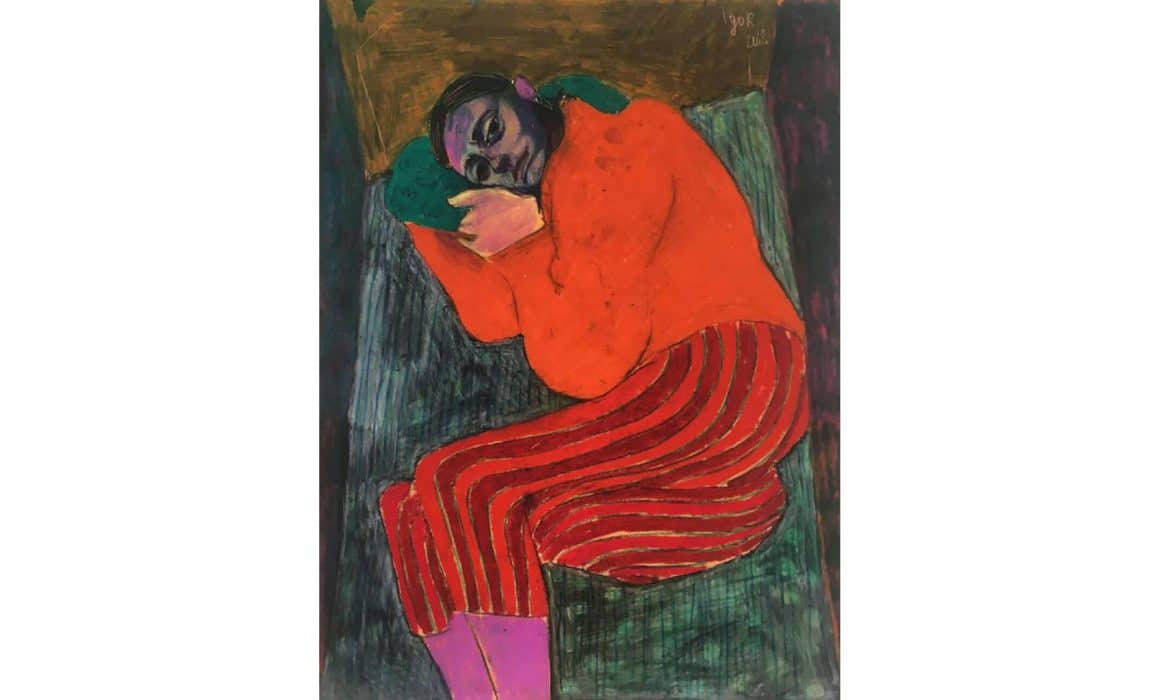Fluidity of Shape: A Conversation Between Benjamin Murphy and Igor Moritz
Fluidity of Shape – A conversation between Benjamin Murphy and Igor Moritz

October by Igor Moritz
BM – Firstly – Why are you an artist?
IM – I think over the last couple of years, looking has crossed over from something that’s passive into something that’s very active in my life. I’ve become absolutely obsessed with everything from colour combinations, facial expressions, to the perception of space and fluidity of shape. Since I have started taking so many things in, I have the necessity to let some of it out too.
BM – So is your feeling of necessity a compulsion? From my own experience, the creative act is almost like a drug I need to stay sane, and I get very frustrated if I can’t work for an extended period of time.
IM – Oh yes, definitely. You can say it’s a compulsion, where the obsession would be the looking. I get extremely fidgety and overwhelmed by everything if I haven’t been painting for a day or so.
BM – Going back to your use of space and shape, where do the distortions of and experiments with these come from? Do you see those things as they appear in your work, or do you intentionally distort them, and if so, for what purpose?
IM – I aim for realism in my work. What I mean by that is, that there is no way to portray any three-dimensional thing on a two-dimensional plane with no distortion. All things have an infinite amount of looks attached to them, and I try to grasp a bit of that essence. I will go about doing that to my advantage, by morphing it the right way to contribute to formal aspects of the work. I have noticed a fundamental change in how I see things, maybe it’s my growing astigmatism or a perception disorder.
BM – Your use of colour is also interesting, it’s as if Francis Bacon had a child with Henri Matisse, and that child grew up to be Igor Moritz. Who are your biggest influences and how do those influences trickle down into your work?
IM – Colour is another phenomenon that is an obsession of mine, and a big driving force in my work. The two you mentioned above know how to use it brilliantly, and are two of the big loves of my life. In terms of colour I’m humbled by Kandinsky’s work from the late 1930s – he seemed to have figured it out. Other artists I look up to would include people like Kirchner, Tal R, Freud, Degas and portraits from the Polish master Witkacy.
BM – So lets talk a bit about the technicality of your works. You are unquestionably a brilliant draftsman but your drawing technique is quite unusual. Tell me about the way you soak paper in linseed oil and how this alters the work.
IM – I don’t know if I can be credited with the invention of that technique but I haven’t seen it used by anyone else. What I do is soak the back of the paper in linseed oil, so that the paper has a sort-of self-lubricating feel to it. When drawing on it with coloured pencils the crushed pigment seems to connect with oil and create an opaque and vibrant finish. What is unusual is that the drawings dry like paintings would, so they do not smudge when done.
BM – Would you say your practice is dependent on experimentation in general?
IM – I just don’t want things to go stale. So I constantly try to find new and better ways of doing what I do.
BM – How have your design-based studies influenced your painting?
IM – It has definitely provided me with a greater insight and respect for objects. It has made me understand the dead things that have a lot of soul and an emotional presence too.
BM – Dead things in what sense?
IM – Sorry I got that from the Polish – in Polish a still life is called Dead Nature. I meant objects, so things like chairs, cups, tables, and scissors etc.
BM – Oh, I like it. So do you approach a ‘dead thing’ any differently to how you approach painting the living?
IM – Not anymore, I hope to be able to paint a chair with as much emotion as someone I love.
To view more of Igor’s work, please click THIS LINK
To purchase prints, please click THIS LINK
Originally published in This Is Tomorrow


Pingback: Creative Restlessness - A conversation between Benjamin Murphy and Kevin Perkins - Delphian Gallery | Delphian Gallery